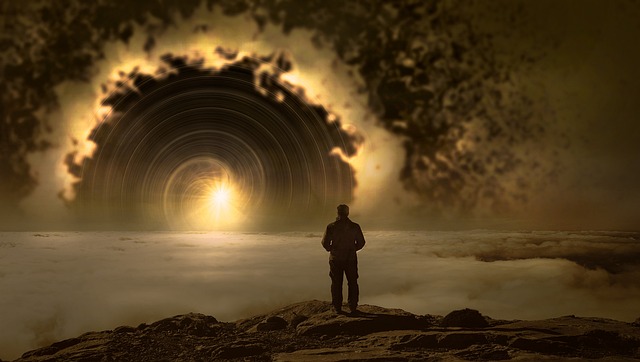The idea of consciousness and its relationship between mind and brain have puzzled, bamboozled, and flummoxed philosophers and scientists alike since the dawn of civilisation. They still do — notwithstanding a host of new, breath-taking discoveries, that include peptides, our molecules of emotions. This isn’t all. Molecular biologists have discovered the fundamental building blocks of life and also unravelled the human genetic code. Yet, such amazing scientific realities have not helped them to fully understand the vital, integrative repertoire, or interconnected orchestrated ‘jazz’ of living organisms.
Agreed that a host of new concepts in physics, for instance, have brought about profound, mind-boggling changes — transforming the mechanistic worldview of René Descartes and Sir Isaac Newton into a holistic, natural view. Yet, this novel vision of rational reality was, or is, by no means easy to accept. New scientific developments have undoubtedly brought scientists into contact with a peculiar and not-so-expected actuality, yes; but, it has also offered them a puzzling parable. In their tussle to clasp this new reality, they have become agonisingly wary — that their fundamental concepts, as also language, including their ‘time-tested’ whole new mode of thinking were, or are, for instance, insufficient to defining the atomic phenomenon.
This new paradigm shift, or holistic worldview, is, of course, accepted as scientific, as also spiritual entity. As physicist and author Fritjof Capra explains, “When the concept of the human spirit is understood as the mode of consciousness in which the individual feels a sense of belonging, of connectedness, to the cosmos as a whole, it becomes clear that ecological awareness is spiritual in its deepest sense, essence. It is, therefore, not surprising that the emerging new vision of reality based on deep ecological awareness is consistent with the so-called perennial philosophy of spiritual traditions, whether we talk about the spirituality of Christian mystics, that of Buddhists, or the philosophy and cosmology underlying the Native American traditions.”
A full ‘organismic’ conception of biology, for instance, or the belief that in every complex system the behaviour of the whole can be understood essentially from the properties of its parts, is central to mediaeval thought — or, Descartes and his celebrated, albeit outdated, method of ‘analytical’ thinking. Modern science has reversed the relationship. Systems, as we now understand, cannot be understood by analysis alone. In other words, it only means that the myriad properties of the parts are not intrinsic entities; they can be appreciated, for the most part, within the context of the larger whole.
The classical Cartesian line of thinking relates to scientific description as objective — that is, independent of the human observer and the process of knowing. To quote Capra, again, “The new paradigm implies that epistemology — understanding the process of knowing — has to be included explicitly in the description of natural phenomenon.” This is principally because systems are all interdependent. You may exemplify them as a network of relationships, including nature, with a corresponding arrangement of concepts and models, although none of them is any more fundamental than the others.
Knowledge is relative and not absolute — any which way you look at it. This new paradigm is in consonance with such a thought that originates in ancient Indian philosophy; logically too. It recognises that all scientific concepts and theories are limited and approximate; and, that science cannot always provide a complete and/or definitive understanding. This takes us to the pioneering work of polymath Alexander Bogdanov and the formulation of his ground-breaking concept called tektology. By using terms, such as complexity and systems interchangeably, Bogdanov distinguished three kinds of systems — organised complexes, where the whole is greater than the sum of its parts; disorganised complexes, where the whole is smaller than the sum of its parts; and, neutral complexes, where the organising and disorganising activities revoke each other.
All through the history of philosophy and science, there’s been a stressful relationship between the study of substance and the study of form. Well, if the study of substance began in Greek antiquity, we have now come a long way — from the idea of four fundamental elements, earth, air, fire and water, to atoms, cells, enzymes, proteins, amino acids, and so on. You’d call them the study of patterns, to be precise. For one simple reason — the study of patterns is crucial to understanding living systems. More so, because systemic properties tend to often emerge from a configuration of ‘ordered’ relationships. This is no less a profound, clear-cut truth. Because, there’s certainly something about life, something non-material, even irreducible — a pattern of organisation.
The view of living systems as self-organising networks, whose components are all interconnected and interdependent, has been well expressed since the beginning of time. However, precisely detailed models of such systems came to be formulated in the recent past, thanks to new mathematical tools. This new, novel ‘mathematics of complexity’ has allowed scientists to model non-linear interconnectedness — that epitomise characteristics of networks — with the help of high-speed computers. This could have made Plato, or Descartes, the initiators of modern, now modified, Western philosophy, as also Galileo Galilei, proud.
The process of living is not the world, but a world — one that is always dependent on interdependent structures — be it human beings, language, thought, or consciousness, including the genetic information encoded in our DNA. The most important point is simple, also profound — we can understand human consciousness primarily through semantics and the whole social context in which it is embedded in its Latin root, ‘consilience,’ or the interconnectedness of all things in the universe.
What does this signify, or quantify? That to be human is to be endowed with reflective consciousness — of body movements that become tightly linked in a complex dance of behavioural co-ordination. It celebrates the sum total, or essence, of complexity, with a new vision of reality — a pragmatic web of life, including living systems, that envelops us all.
— First published in The Himalayan Times, Nepal

